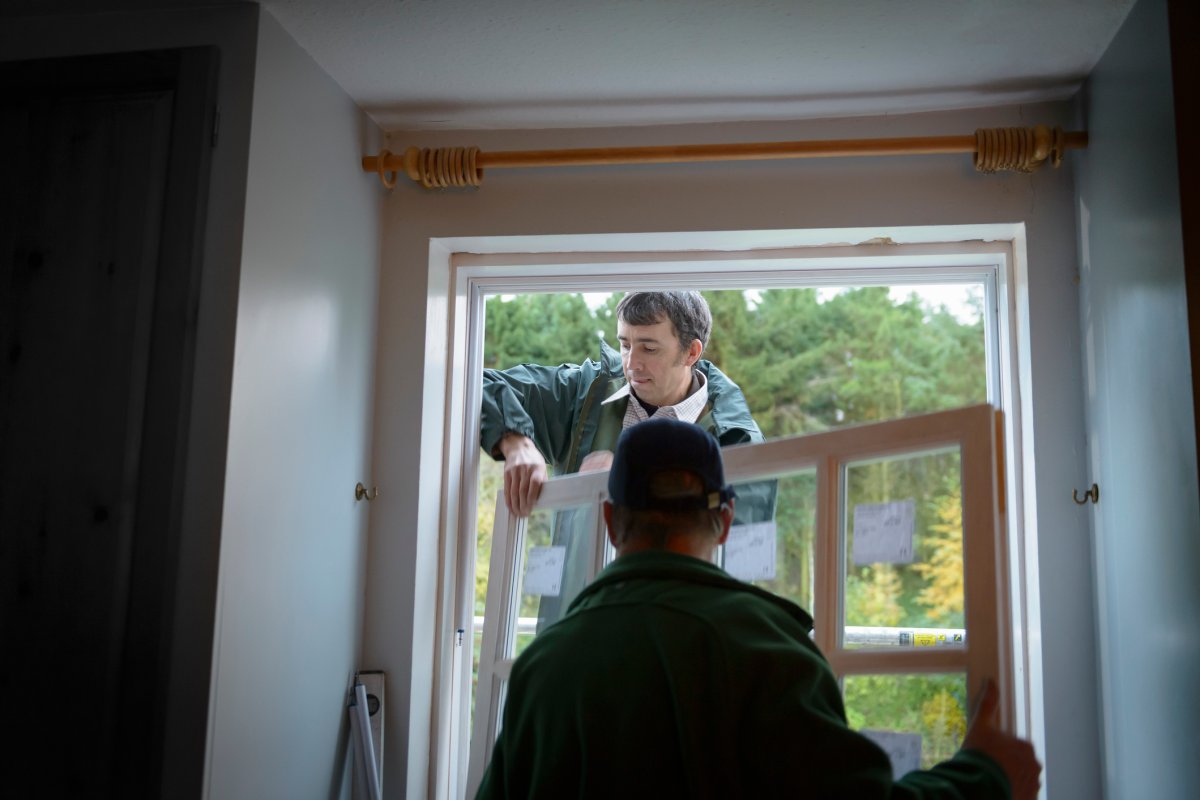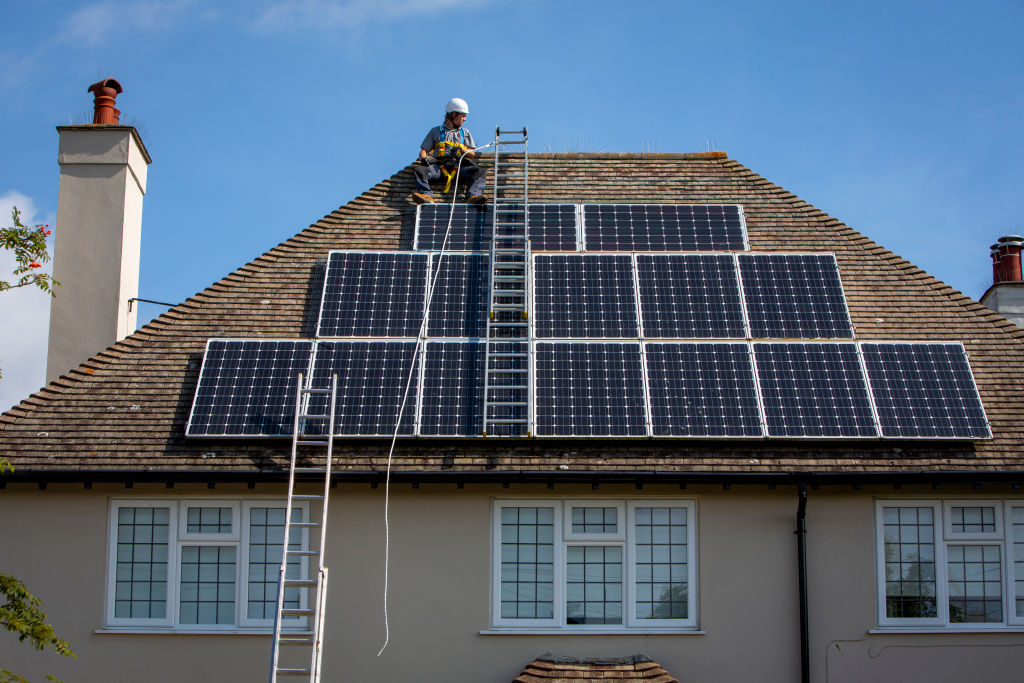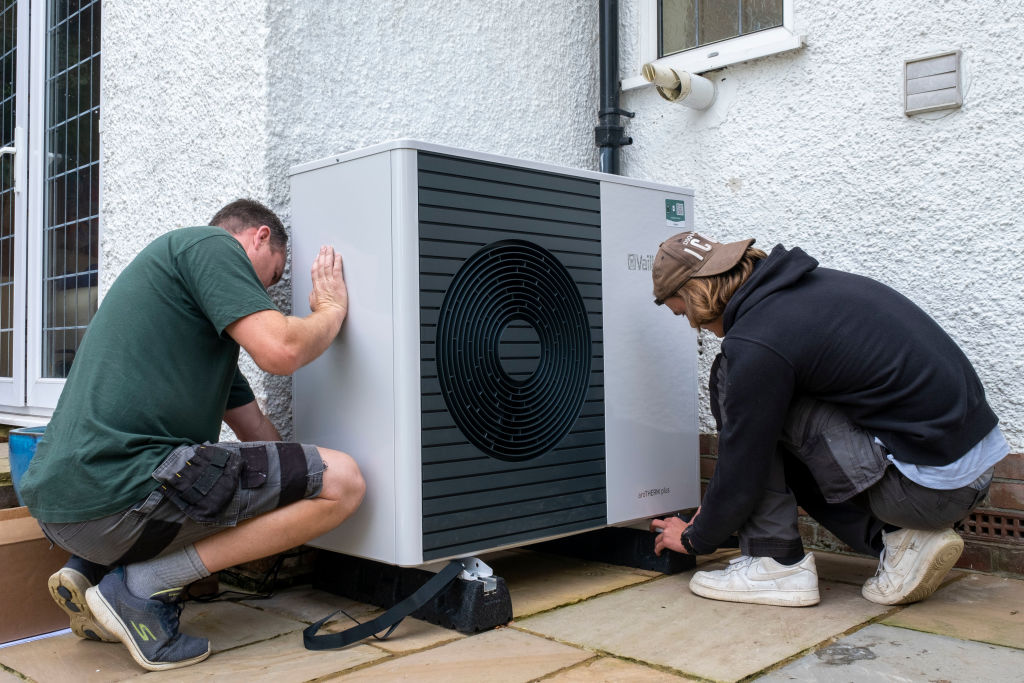

We may earn revenue from the products available on this page and participate in affiliate programs. Learn More ›
If you don’t like leaving money on the table, then you’ll want to take advantage of the thousands of dollars in incentives offered by the federal government for various energy efficiency home improvements. Here’s the catch, though. They now expire on December 31, 2025.
Three years ago, the Inflation Reduction Act was passed by the U.S. Congress, offering $369 billion for energy security and climate change investments, making it the largest climate bill in American history. That translates to savings of up to $3,200 per home for energy efficiency upgrades, according to the Environmental Protection Agency. In addition, homeowners can take advantage of the Residential Clean Energy Credit, which provides a 30 percent income tax credit for clean-energy equipment, such as rooftop solar, wind energy, geothermal heat pumps, and battery storage.
However, these incentives are being phased out following the passage of the One Big Beautiful Bill Act (OBBBA) this past July. If you are in the market for new appliances, HVAC equipment, and other home upgrades, there’s no better time than the present to tackle these projects to save the most money. Here we explore how to qualify for tax credits this fall, which projects to prioritize, and ways to still save money in the new year.
How to Qualify for Tax Credits
These tax credits are managed by the U.S. Internal Revenue Service (IRS), so you’ll be able to claim the credits when filing 2025 taxes. Claim the credits using IRS Form 5695. To qualify, you must incur the expense and install the product by the end of this year. Some of the more complex projects, such as installing solar panels, can take months to schedule a qualified installer and complete the work, so don’t delay.
Save all your receipts and product certifications to ensure you have all the necessary materials to claim your credit. There are a number of specific qualifications to keep in mind, depending on the product, type of residence, and other factors. Learn more at the Energy Star website.

Projects to Tackle Right Away
Here are some of the top home improvement projects eligible for energy efficiency tax breaks, set to expire at the end of this year. To confirm whether a specific product is eligible for the credit, check the Energy Star website.
Exterior Doors, Windows, and Skylights
Updated doors, windows, and skylights improve the look of a house, plus they can help increase energy efficiency. If the entrances to a home have lost their tight seal, this can lead to higher energy use and more expensive heating and cooling bills. Replace windows and doors if there are signs of air leakage, visible damage or rot on the frame, condensation between panes, or if they no longer open and close easily. Receive 30 percent of the cost of an exterior door, up to $250 per door–$500 total for the year. For windows and skylights, receive 30 percent of the cost, up to $600 per year.
Rooftop Solar
Solar panels provide a clean, renewable energy source that helps reduce greenhouse gas emissions. They typically last about 25 to 30 years, making them a smart investment over time. Homeowners or renters installing a photovoltaic solar system on a residential home in the U.S. can receive a 30 percent tax credit. The total cost claimed can include on-site preparation, assembly, and installation, but it can’t include the cost of building components that serve primarily as a roofing or structural function. This incentive can result in an average savings of $7,000 per home.

Air Conditioner
Upgrade to an energy-efficient central air conditioning system and receive 30 percent of the cost of a new AC unit, including installation costs, up to $600 per year. A split-system central AC must have a Seasonal Energy Efficiency Ratio (SEER2) of 17 or greater and an Energy Efficiency Rating (EER2) of 11.5 or greater. Packaged central air conditioners must have a SEER2 rating of 16 or greater and an EER2 of 11.5 or greater. Window AC units are not eligible.
Water Heater
Heat pump water heaters, or hybrid electric water heaters, capture heat from the surrounding air and transfer it to a tank to heat water. Energy-efficient water heaters use a third of the electricity and are a third cheaper than conventional electric water heaters. Save 30 percent when purchasing and installing a new heat pump water heater, up to $2,000.
Electric and natural gas heat pump water heaters that are Energy Star-certified and above 55 gallons of capacity are eligible. High-efficiency water heaters and hot water boilers that run on natural gas, propane, or oil also quality for 30 percent back, including installation costs, up to $600. Finally, solar water heaters are eligible for 30 percent of the cost, with no annual limit.
Insulation
One of the quickest and most cost-effective ways to make a home more energy efficient is to install insulation and seal up drafts. This makes your home more comfortable, and it can save around 10 percent on annual energy bills. Receive 30 percent of the total cost of home insulation, including installation costs, up to $1,200 per year.
Qualifying insulation products include batts, rolls, blow-in fibers, rigid boards, expanding spray, and pour-in-place. Air-sealing products, like weather stripping, caulk, spray foam in a can, and house wrap, can also qualify if they come with a Manufacturer’s Certification Statement.
Electric Panel
Your electric panel, or breaker box, is one of the most important components of your home and the core of all wiring and electrical features. Replacing it can improve the efficiency of your home. It’s beneficial to make this change before getting new appliances since larger energy loads require an updated electric panel. Receive 30 percent of the cost of replacing your electric panel, up to $600.
Heat Pump
Using a refrigerant and compressor, heat pumps both heat and cool a home. This dual process is energy efficient and can ultimately save money and space. Homeowners and renters can get a rebate of up to $8,000 to install an electric or natural gas heat pump. For those who do not qualify for this rebate, there is a tax credit of up to $2,000 for heat pump installation. Geothermal heat pumps are eligible for 30 percent money back, including installation fees. Heat pumps must meet Energy Star’s Most Efficient criteria for the year they are installed.

Ways to Save in the Future
Once the federal incentives end under OBBBA, you can still look for state and local opportunities that might be available. Here are some helpful resources for finding additional rebates and tax incentives for heat pumps:
- Database of State Incentives for Renewables & Efficiency from N.C. Clean Energy Technology Center at N.C. State University.
- Incentive Calculator from Rewiring America, the leading electrification nonprofit.
- Check your state’s energy office or Department of Energy website.
- Contact your local utility company, as many utility providers offer their own rebates to encourage energy-efficient upgrades.
Even without tax credits and rebates, home energy efficiency improvements are generally beneficial investments, frequently recouping their upfront costs within several years through reduced utility expenses. These enhancements can also increase the comfort of your home while boosting its long-term market value and reducing your environmental footprint.
